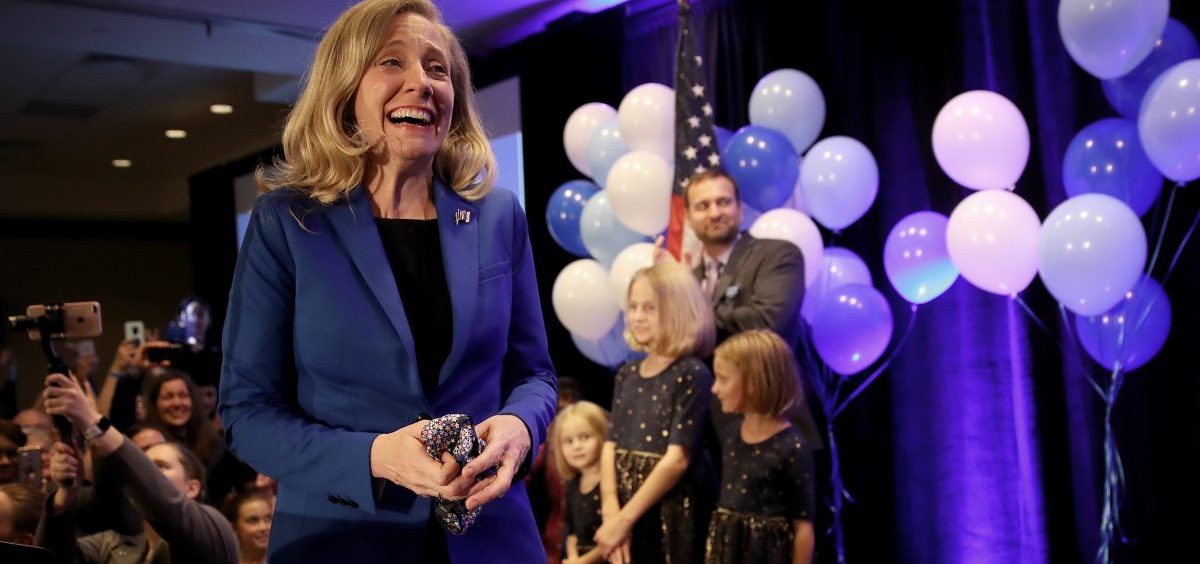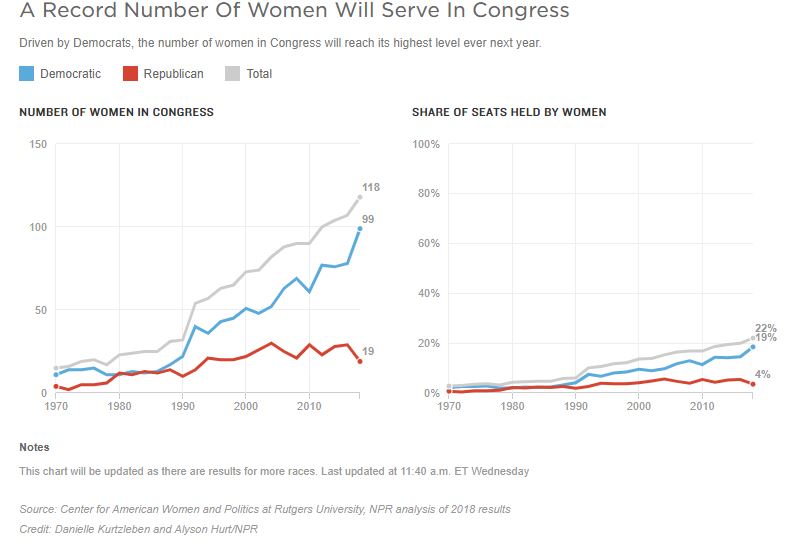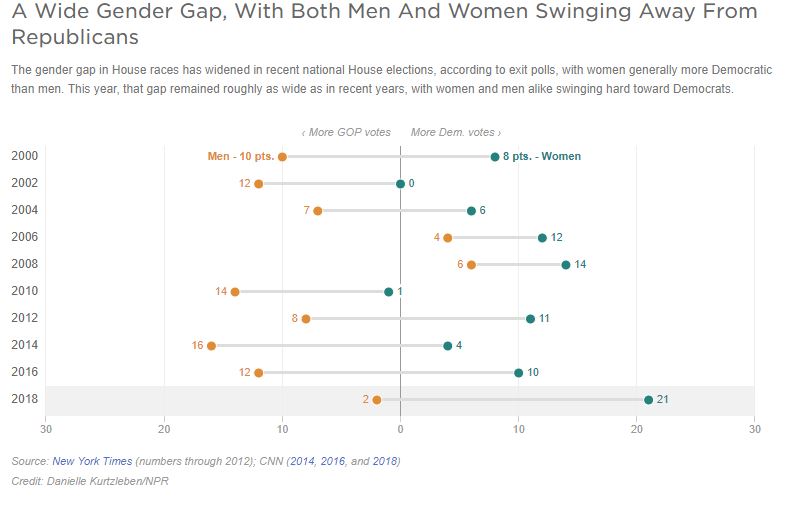News

A Record Number Of Women Will Serve In Congress (With Potentially More To Come)
By: Danielle Kurtzleben | NPR
Posted on:
Note: NPR will be updating these numbers as more results come in.
Updated at 11:40 a.m. ET Wednesday
After Tuesday’s elections, a record number of women will serve in Congress come January 2019.
With results still coming in, 95 women have won their House races as of early Wednesday morning, up from the current 84. In addition, at least 13 women won Senate seats. That’s in addition to the 10 female senators who were not up for re-election this year.
That means at least 118 women will serve in the 116th Congress, up from the current 107. And it will bring the share of Congress members who are women up from the current 20 percent to at least 22 percent.
Don’t see the graphic above? Click here.
These new records represent the culmination of a record-setting year for female candidates. In elections for Congress, governorships and state legislatures alike, the number of women who ran outstripped previous years, as did the number of women nominated.
Many first-time candidates this year were inspired to run for office, at least in part, by the 2016 presidential election — both the fact that the first female major-party nominee ever lost, and that Donald Trump, who is very unpopular among women (particularly Democratic women), won.
And the women elected this year are overwhelmingly Democratic. Thus far, 83 of the 95 women elected to the House this year, as well as 10 of the 13 elected to the Senate, are Democrats. (One still-undecided Senate seat, in Arizona, will go to a woman no matter what, as both major-party candidates are women. That brings the total of women assured to be elected to the Senate this year to 14.)
In fact, the number of Republican women in Congress, at latest count, will decline in the next session.
With the record-breaking group of women elected this year comes a crop of other records and firsts. For example, the next Congress will feature a record number of women of color, as well as a record number of non-incumbent women, according to the Rutgers University Center for American Women and Politics. It will also feature the first Native American women, the first Muslim women and the youngest woman ever elected to Congress.
A still-gaping gender gap
Women swung far toward Democrats this year, but so did men — at least, relative to where they usually are.
Which is to say, the gap between female and male voters remained roughly as big as it has been in recent years, according to exit polls. Women were 21 points more likely to vote for Democrats than Republicans in House races — 60 percent voted for Democrats, to 38 percent who voted for Republicans.
Men, meanwhile, were about evenly split, with 50 percent voting for Republicans to 48 percent choosing Democrats.
Don’t see the graphic above? Click here.
That’s a big part of the story of 2018: many demographic groups swinging far more Democratic than they did in 2014, a wave year for Republicans.
But within the exit polls there are a few more broad lessons about partisanship by gender in America.
One is that it takes a lot to swing white women Democratic. According to exit polls, they were about evenly split this year, with 50 percent choosing Democrats, compared to 48 percent who chose Republicans. (And another massive pre-election poll found that white women may have slightly favored Republicans, 49 percent to 45 percent.)
In other words, even in a year where there’s a Democratic wave in the House, white women are about evenly split. This is also roughly in line with 2006, which was another wave year for Democrats. White women were evenly split that year, too.
Another important trend from this year’s exits (and any year’s) is how gender interacts with race and education. Being white, a man, and not having a college degree all are factors correlated with being more Republican. Nonwhites, women and college graduates all tend to vote more Democratic.
That can create some wide chasms between groups. White women with college degrees voted strongly for Democrats, by 22 points. White men with college degrees, meanwhile, were evenly split, and whites without degrees voted strongly Republican, according to CNN’s exit polls.
Meanwhile, about three-quarters of nonwhite voters, with or without college degrees, voted for Democratic candidates in their districts. (These results were not broken out by gender.)
These breakdowns by education and gender are the sources of some of the most profound demographic shifts in recent American politics. College-educated women, in particular, have swung hard toward Democrats in recent years. Though that swing was already in progress, Trump may have accelerated that trend.
Diverging views on gender
Exit polls also showed wide partisan gaps in views of gender. An overwhelming majority of Americans, nearly 8 in 10, said it’s important to elect more women to public office. Among those who consider that “important,” two-thirds voted for Democrats. Meanwhile, more than 8 in 10 of those who consider that “not important” voted for Republicans.
Views on sexual harassment diverged similarly: About 8 in 10 said they see it as a “serious problem,” and nearly two-thirds of them voted Democratic. Among those who see harassment as “not a serious problem,” nearly 8 in 10 voted Republican.
With reporting from NPR’s Renee Klahr and Sean McMinn.
9(MDI4ODU1ODA1MDE0ODA3MTMyMDY2MTJiNQ000))



